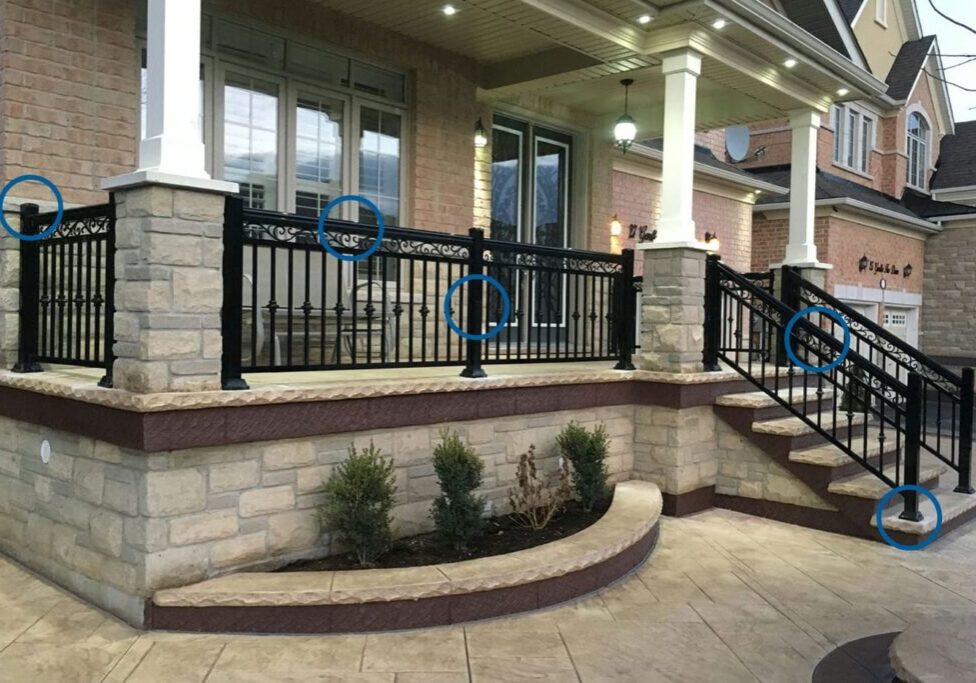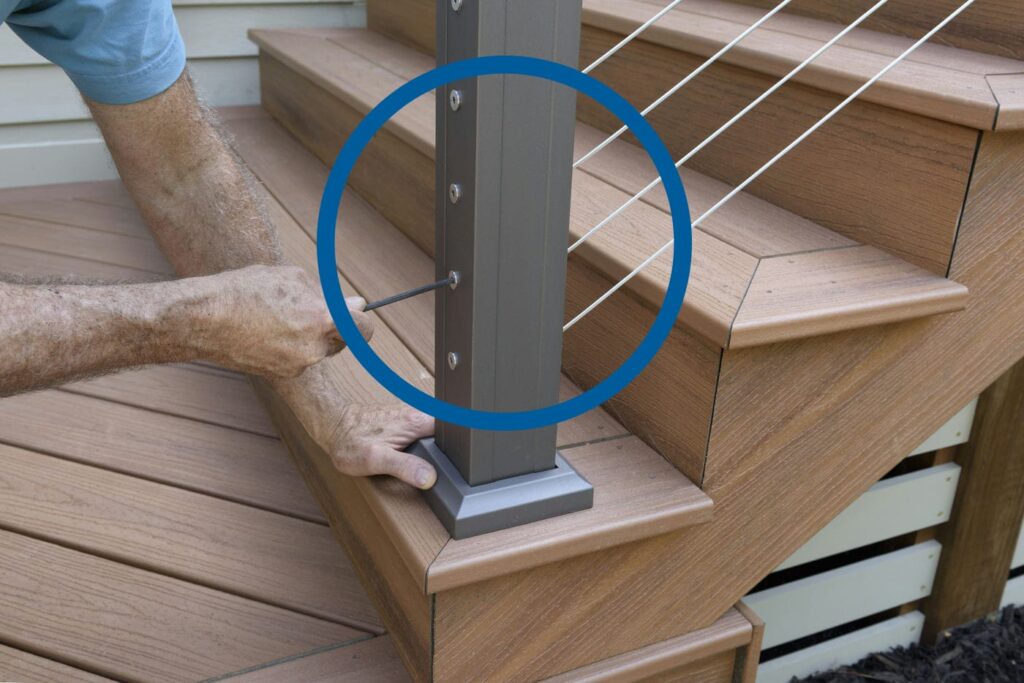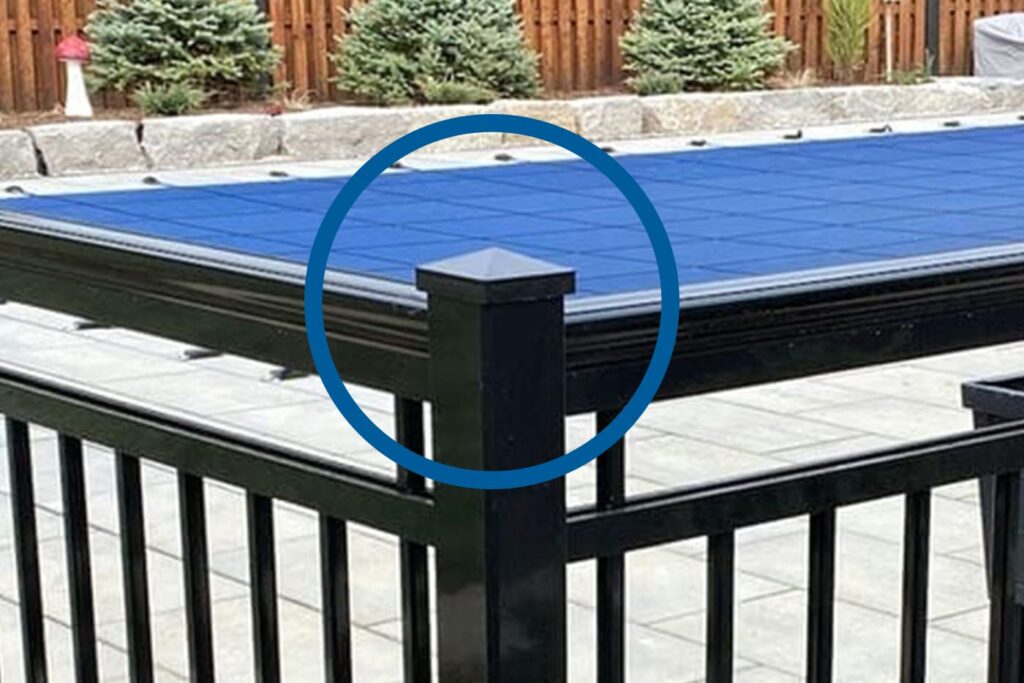
Railings are more than just functional safety features; they are integral elements of a home’s design aesthetic that can significantly enhance both the interior and exterior spaces. Whether you’re embarking on a new construction project or looking to upgrade your existing railings, understanding the various components that make up a typical railing system is crucial. This knowledge will not only help you make informed decisions about materials and designs but also ensure that your railings meet both safety standards and your personal style preferences. In this comprehensive guide, we’ll break down the anatomy of a railing system, exploring each component from the structural supports to the decorative finishes, helping you navigate the complexities of choosing the perfect railing system for your home.
Posts: The Foundation of Any Railing System

Posts are the backbone of any railing system, providing the necessary structural support that keeps the entire installation secure and stable. Positioned at regular intervals, they bear the load of the railings and ensure that the structure can withstand daily use and environmental stresses. Understanding the different types of posts available is key to both the durability and the aesthetic appeal of your railing system.
Materials
- Wood: Traditional and versatile, wooden posts can be painted or stained to match any design aesthetic, making them popular for indoor and outdoor applications.
- Metal: Common metals include aluminum, stainless steel, and wrought iron. Metal posts offer superior strength and a sleek, modern look. They are particularly resistant to weathering and corrosion, making them ideal for outdoor railings.
- Composite: Made from a blend of plastic and wood fibers, composite posts are designed to mimic the look of wood but with added durability and minimal maintenance.
Design Considerations
When selecting posts, consider both the load they need to support and the spacing between them. The distance between posts affects the railing’s strength and the materials used for the infill. For instance, larger spans might require thicker or more robust posts to ensure safety and stability.
Installation Tips
Proper installation of posts is crucial for the overall safety of the railing system. Posts should be securely anchored into the ground or the deck structure, with attention paid to local building codes that dictate the depth and method of installation. For enhanced stability, especially in taller or longer railing sections, additional support posts may be necessary.
Rails: Connecting and Enhancing the Railing Structure

Rails serve as the connecting framework between posts, providing both structural integrity and aesthetic appeal to the railing system. They can run either horizontally or vertically, depending on the design, and play a crucial role in defining the overall look of your railings.
Types of Rails
- Top Rails: These are the uppermost parts of the railing system, often grasped by hand. Top rails must be sturdy and comfortable to hold, with a smooth surface to ensure safety.
- Bottom Rails: Positioned at the lower part of the railing, bottom rails add an extra layer of support and stability to the balusters or infill. They help maintain the alignment and even spacing of the infill components.
Material Choices
- Wood: Offers a classic and warm appearance, easily customizable through painting or staining.
- Metal: Frequently used for its durability and sleek appearance. Aluminum, steel, and wrought iron are popular choices, each providing unique benefits in terms of strength and style.
- Vinyl: A low-maintenance option available in various colors, vinyl rails are resistant to weathering and easy to clean, making them ideal for busy or harsh environments.
Design and Functionality
The choice of rail design impacts not only the look of your railing system but also its functionality. For instance, wider top rails can provide a more comfortable grip, which is particularly important in settings where accessibility is a priority. On the other hand, intricate designs and patterns can add a decorative touch to enhance the architectural style of your space.
Installation Insights
When installing rails, precision is key. The rails must be level and securely attached to the posts to ensure the safety of the railing system. It’s also important to consider the local building codes, which may specify the maximum allowable distance between the rails to prevent accidents, especially for systems designed for elevated platforms or staircases.
Balusters/Spindles: Safety and Style Between the Rails

Balusters, also commonly referred to as spindles, are the vertical components that fill the space between the top and bottom rails. They play a critical role in providing safety by preventing falls, especially on elevated platforms, and contribute significantly to the aesthetic appeal of the railing system.
Understanding Balusters
- Purpose: Balusters ensure that railings are safe barriers, particularly in homes with children or in public spaces. They prevent people and pets from slipping through gaps and provide additional structural support to the entire railing system.
- Design: Balusters come in various shapes and designs, from simple, straight rods to intricate patterns that can transform a simple railing into a striking architectural feature.
Material Options
- Wood: Wooden balusters offer a traditional look and can be carved with unique designs or shapes. They are ideal for matching with wooden decks or classic architectural styles.
- Metal: Metal balusters, including those made from wrought iron, steel, or aluminum, provide durability and offer a range of styles from sleek, modern lines to ornate, classical patterns.
- Glass: Glass balusters create a seamless, open look, maximizing visibility and light. They are particularly popular in contemporary homes and commercial spaces where maintaining a view is important.
Customization and Trends
Balusters offer vast opportunities for customization. Homeowners can mix and match materials and designs to create a unique look or opt for uniformity for a sleek, coherent style. Recent trends include combining different materials, such as glass and metal, to achieve both functionality and a modern aesthetic.
Installation Considerations
The spacing of balusters is regulated by safety codes, which typically require that the space not allow a 4-inch sphere to pass through, ensuring safety for children and pets. Proper installation is crucial, and it’s recommended to consult with professionals to ensure that your railing system is not only beautiful but also compliant with all local safety standards.
Base Plates and Foot Covers: Ensuring Stability and Aesthetic Integrity

Base Plates and Foot Covers are crucial yet often overlooked components of a railing system. These elements serve dual purposes: enhancing the stability of the posts and improving the overall visual appeal of the installation by concealing mounting hardware.
Role of Base Plates
- Stability: Base plates are the foundation on which the posts are mounted. They distribute the weight and stresses of the railing system over a broader area, thereby enhancing the stability and safety of the posts.
- Material and Design: Typically made from metal, such as steel or aluminum, base plates must be robust and resistant to corrosion and wear. Their design varies depending on the type of installation (surface-mounted or core-drilled) and the architectural style of the railing.
Function of Foot Covers
- Aesthetic Enhancement: Foot covers fit over the base plates, hiding bolts and screws that can detract from the sleek look of your railings. By covering these elements, foot covers provide a cleaner and more polished appearance.
- Consistency in Design: Available in various styles and finishes, foot covers can be matched with the rest of the railing components, ensuring a consistent look throughout the system.
Installation Tips
- Secure Mounting: It’s essential to ensure that the base plates are securely anchored to the installation surface, whether it’s concrete, wood, or another material. Proper installation prevents movement and maintains the integrity of the railing system.
- Seamless Fit: Choose foot covers that fit snugly over the base plates to effectively conceal the mounting hardware. A seamless fit not only looks better but also prevents moisture and debris from getting under the plate, which could lead to corrosion or buildup.
Customization Options
Customizing the look of your base plates and foot covers can make a significant difference in the overall style of your railing system. Options range from minimalistic designs that blend into the surroundings to ornate patterns that stand out and make a statement.
Handrails: Enhancing Safety and Accessibility

Handrails are a crucial component of any railing system, specifically designed to provide support and stability for individuals using stairs, ramps, or elevated areas. They play a key role in enhancing both the safety and the accessibility of a space, making them an essential feature in residential, commercial, and public environments.
Importance of Handrails
- Safety: Handrails prevent falls by giving people something to hold onto, which is particularly important in slippery or steep conditions.
- Accessibility: They make spaces more accessible to individuals with mobility issues, including the elderly and those with disabilities, by providing the necessary support to navigate changes in elevation.
Design Standards
- Ergonomic Design: Handrails must be easy to grasp and hold onto, with shapes and surfaces that accommodate the natural grip of a hand. Common shapes include round profiles or flattened tops with rounded edges.
- Height Regulations: The height of handrails is regulated by building codes, typically requiring installation at a height that ranges from 34 to 38 inches above the stair nosing or the surface of a ramp.
- Materials: Like other railing components, handrails can be crafted from a variety of materials including wood, metal, and composites. Each material offers different aesthetic and functional benefits, from the warm appearance of wood to the durability and modern look of metal.
Material Choices
- Wood: Provides a natural, warm touch, popular in residential settings for its classic look and the comfort it offers.
- Metal: Often used for its strength and minimal maintenance, metal handrails can be fashioned from stainless steel, aluminum, or wrought iron, each offering a distinctive style.
- Vinyl and Composites: These materials offer durability and ease of maintenance, with a range of color and texture options to fit any design scheme.
Installation Considerations
Proper installation of handrails is critical for ensuring safety. Handrails should be securely mounted to walls or the railing posts with brackets that can withstand significant force. Additionally, the ends of handrails should be returned to the wall or floor to avoid snagging clothes or bags, and to provide a neat finish.
Finials and Caps: Decorative Touches and Practical Protection

Finials and Caps are the finishing touches on any railing system, offering both decorative flair and practical benefits. These elements are often used to cap the posts, providing a polished look while also protecting the structure from environmental elements.
Importance of Finials and Caps
- Aesthetic Appeal: Finials add a decorative accent at the top of each post, often in shapes like spheres, pyramids, or ornate sculptures. They can reflect the architectural style of the building or provide a contrasting design element.
- Protection: Caps serve a practical purpose by covering the open tops of posts, preventing water ingress that can lead to damage such as rust in metal posts or rot in wooden posts.
Types of Finials and Caps
- Wooden Caps: Best suited for wooden railing systems, these caps can be carved or shaped in various designs, from simple flat caps to more intricate, hand-carved options.
- Metal Caps: Commonly made from aluminum, iron, or stainless steel, metal caps are durable and offer a modern touch. They can be plain for a sleek look or ornately designed to add character.
- Glass and Composite Materials: For a contemporary style, glass or clear composite caps can provide an interesting visual element without drawing too much attention away from other design features.
Customization Options
The design of finials and caps can be tailored to complement the overall railing design:
- Matching or Contrasting Styles: Choose finials and caps that match the railing material and style for a cohesive look, or select contrasting materials and colors for a bold statement.
- Themes and Motifs: For properties with specific themes, such as historical, nautical, or floral, finials can be custom-designed to echo these motifs, enhancing the thematic decor of the space.
Installation Considerations
- Secure Fit: Ensure that finials and caps fit securely on the posts. They should not easily come loose, as this could pose a safety hazard.
- Weather Resistance: Choose materials and finishes that are appropriate for the climate. For outdoor railings, it is crucial to select weather-resistant materials to prevent deterioration.
Accessories: Enhancing Functionality and Style
Accessories in railing systems serve multiple purposes, from increasing functionality and safety to adding unique stylistic touches that elevate the overall design. Whether integrating lighting solutions or decorative panels, the right accessories can transform a simple railing into a standout feature of home or commercial space architecture.
Popular Railing Accessories
- Lighting: Integrated lighting can enhance safety by illuminating paths and stairways. It also adds ambiance to outdoor spaces like decks and balconies, making them usable long after sunset.
- Decorative Panels: These can replace traditional balusters or infills, providing a custom design element that reflects personal style or branding.
- Privacy Screens: For areas where additional seclusion is desired, such as on a balcony or pool enclosure, privacy screens can be attached to the railing system.
- Gate Integrations: Adding gates to railing systems at entry points enhances security and can be designed to match the style of the railings for a cohesive look.
Ready to Enhance Your Space? Choose GTA Railings
Choosing a professional railings installer ensures that your railings are not only visually appealing but also meet the highest standards of safety and durability. Here’s why you should consider GTA Railings for your next project:
- Expert Installation: Our team offers precision and expertise from initial design to final installation, ensuring your railings are perfectly executed.
- Compliance and Quality: We adhere to all building codes and use only the highest quality materials, guaranteeing a lasting addition to your space.
- Custom Designs: Tailored to fit your specific style and needs, our railings enhance both the functionality and aesthetics of your property.
Elevate the look and safety of your property with GTA Railings. Contact us today to discuss your project and discover how we can bring your vision to life with professionalism and style. Transform your space with the perfect railings. Let’s get started!